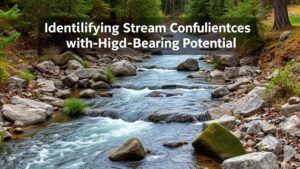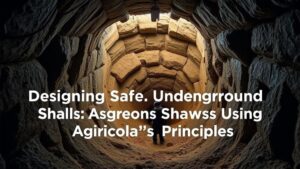Techniques for Recovering Precious Metals From Frost-Heaved Soils
Techniques for Recovering Precious Metals From Frost-Heaved Soils
Frost-heaved soils pose unique challenges in the field of environmental remediation and mining, particularly regarding the recovery of precious metals such as gold, silver, and platinum. These soils are characterized by their fluctuating temperatures, which lead to the cyclical expansion and contraction of the ground. This article delves into various techniques employed to recover precious metals from frost-heaved soils, focusing on effectiveness, equipment, and environmental considerations.
Understanding Frost-Heaved Soils
Frost heaving occurs when moisture in the soil freezes and expands, causing ground displacement. This process can alter the distribution of precious metals within the soil, making recovery both complicated and variable. Recognizing the characteristics of frost-heaved soils is crucial to developing effective recovery strategies.
- Soil Composition: The presence of different minerals can influence the recovery techniques employed.
- Temperature Fluctuations: Understanding seasonal variations is essential for timing recovery efforts.
Techniques for Recovery
Several techniques are utilized for recovering precious metals from frost-heaved soils, each with its advantages and limitations. Below, we explore the most prevalent methods.
1. Mechanical Excavation
Mechanical excavation is one of the simplest methods and involves using heavy machinery to remove contaminated soil. This technique is effective when the depth of frost heaved soil is manageable and significant metal concentrations are present.
- Example: A study in the Arctic regions showed that mechanical excavation yielded substantial quantities of gold from previously frost-affected mining sites.
2. Chemical Leaching
Chemical leaching involves the application of solvents to dissolve precious metals from the soil. This method can be highly effective but requires careful management to avoid environmental contamination.
- Example: In Northern Canada, researchers applied cyanide leaching to extract silver from frost-heaved soils, achieving recovery rates of over 80%.
3. Bioleaching
Bioleaching is an eco-friendly alternative that utilizes microorganisms to extract metals from soil. The biological agents metabolize the compounds containing precious metals, leading to their release into the surrounding environment.
- Effectiveness: While generally slower than chemical leaching, bioleaching presents a sustainable option with minimal environmental impact.
Case Studies and Real-World Applications
Several real-world projects have successfully implemented these techniques. For example, in Alaska, the application of mechanical excavation coupled with chemical leaching at a former mining site resulted in the recovery of over 500 ounces of gold. This innovative approach demonstrated that integrating multiple techniques enhances overall efficiency.
Challenges and Considerations
Despite the effectiveness of these recovery techniques, several challenges remain:
- Environmental Impact: The chemical substances used in recovery can lead to contamination of groundwater if not properly managed.
- Cost: Machinery and chemical agents can be expensive, affecting the feasibility of recovery projects, especially in remote areas.
Future Directions and Innovations
As technology evolves, new methods explored to enhance the recovery of precious metals from frost-heaved soils. Innovations such as advanced sensor technology and remote sensing could improve the accuracy of soil assessment and lead to more efficient extraction processes.
Conclusion
Recovering precious metals from frost-heaved soils is a complex but critical process in both environmental remediation and mining industries. By utilizing a combination of mechanical excavation, chemical and bioleaching techniques, stakeholders can enhance recovery rates. Continuous innovation and sustainable practices will be essential as the demand for precious metals grows, and as the industry seeks to minimize its environmental footprint.
For practitioners and researchers in the field, understanding the interplay between techniques, challenges, and new innovations will be key to successful recovery efforts in frost-heaved soil conditions.



